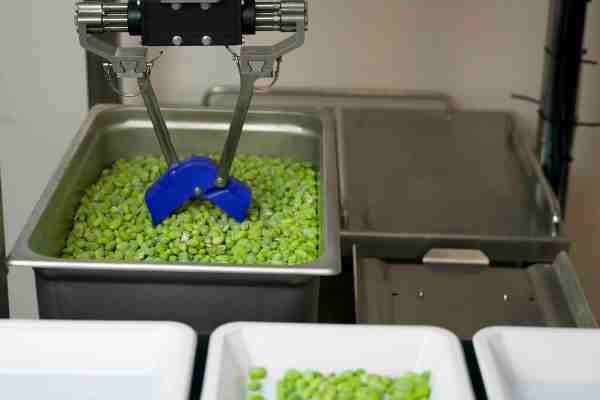In the past several years, the kitchen has increasingly become a focal point for the world of automation. Miso, for instance, has made a name for itself with Flippy, a hamburger cooking arm that has found its way into chain restaurants like White Castle. Others, including Zume Robotics, have been less successful — the pizza robot firm shut its doors last year after attempting a major pivot into Earth-conscious food packaging.
Chef Robotics has been kicking since 2019. The founding was unquestionably fortuitous timing, just ahead of COVID-related closures and resulting labor shortages that continue to this day in industries like fast food. This week, the San Francisco–based firm announced that it has closed a $14.75 million combo equity/debt round.
The new cash infusion follows a raise of $7.7 million in 2021, bringing the total funding up to $22.5 million. That figure includes $18.2 million in equity and $4.25 million in debt. MaC Venture Capital, MFV Partners, Interwoven Ventures and Alumni Ventures joined existing backers, Construct Capital, Kleiner Perkins, Promus Ventures and Red and Blue Ventures.
Much of the money will go toward deploying Chef’s go-to-market strategy, which is based around a RaaS (robotics-as-a-service) plan. RaaS is proving to be an extremely popular model in the world of industrial automation, as the upfront cost of a big robot is far too steep for many companies to foot. The company will also be hiring engineers and technicians, growing a headcount that currently numbers around 30.
Chef founder and CEO Rajat Bhageria tells TechCrunch that Chef distinguishes itself from the likes of Miso by focusing on food assembly, rather than cooking specifically. The company is also touting ChefOS, the underlying software driving its robot arm’s decisions. “[F]ood is very highly dimensional: depending on how you prep the ingredients (e.g., julienned onions vs. chopped), cook the ingredients (e.g., sautéed, baked, broiled), store the ingredients (e.g., cooked, room temp, frozen), the material properties radically differ,” the company notes. “And these properties change daily based on who is prepping and cooking. To deal with this, Chef uses various sensors — like cameras — to collect training data and then trains models that help the company learn how to manipulate a large corpus of ingredients.”
Part of the reason the company places such emphasis on the software/AI side of things is that most of Chef’s hardware components are off-the-shelf. There is, after all, a philosophy among many roboticist that if existing solutions do the job, there’s no reason to reinvent that specific wheel.
Chef isn’t revealing specific sales figures, only saying that it has “robots at food companies in five cities around the U.S. and Canada,” including “Fortune 500 food companies.” Bhageria also tells TechCrunch that it has quadrupled “recurring revenue from 2022 to 2023,” though, again, nothing more specific than that.
